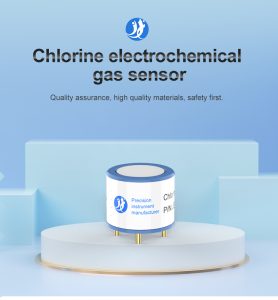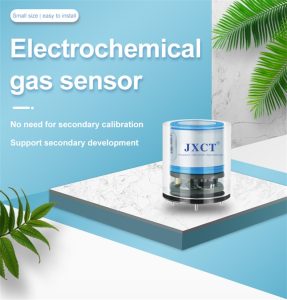Gas sensor technology plays a crucial role in ensuring the safety and efficiency of industrial processes. Industrial environments often involve the use, production, or storage of various gases that can be hazardous if not properly monitored and controlled. Gas sensors are designed to detect the presence of specific gases and provide real-time data on their concentration levels. This article explores the importance of gas sensor technology in enhancing safety and efficiency in industrial processes, highlighting its applications, benefits, and future prospects.

Understanding Gas Sensor Technology:
Gas sensors are electronic devices that detect and measure the concentration of specific gases in the surrounding environment. They utilize various sensing principles, such as electrochemical, catalytic, infrared, or semiconductor technologies, to detect target gases accurately. Gas sensors consist of a sensing element that interacts with the gas molecules, a transducer that converts the detected gas concentration into an electrical signal, and a signal processing unit that analyzes and presents the data. The data collected by gas sensors is crucial for monitoring and controlling gas levels in industrial processes.
Industrial Applications of Gas Sensor Technology:
Gas sensor technology finds wide-ranging applications across various industries, including oil and gas, chemical manufacturing, pharmaceuticals, food processing, and environmental monitoring. Some key applications include:
2.1. Safety Monitoring:
Gas sensors are extensively used to monitor the presence of toxic or combustible gases in industrial environments. By continuously monitoring gas concentrations, they can trigger alarms or initiate safety measures when gas levels exceed predefined thresholds. This helps prevent accidents, protect workers' health, and ensure compliance with safety regulations.
2.2. Process Control:
In industrial processes where gases are used or produced, maintaining optimal gas concentrations is critical for efficient operation. Gas sensors provide real-time data on gas levels, enabling precise control of gas flow rates, reaction conditions, and environmental parameters. This helps optimize process efficiency, reduce energy consumption, and minimize waste.
2.3. Environmental Monitoring:
Industries that release gases into the environment need to monitor their emissions to ensure compliance with environmental regulations. Gas sensors enable continuous monitoring of pollutant gases, such as sulfur dioxide, nitrogen oxides, and volatile organic compounds. This data helps industries identify and implement measures to reduce emissions and minimize their environmental impact.
Benefits of Gas Sensor Technology: Gas sensor technology offers several benefits that contribute to enhanced safety and efficiency in industrial processes:
3.1. Early Detection of Hazards:
Gas sensors provide early detection of hazardous gases, allowing prompt actions to be taken to prevent accidents or mitigate their impact. By triggering alarms or initiating safety protocols, gas sensors help protect workers, equipment, and the surrounding environment from potential dangers.
3.2. Real-time Monitoring:
Gas sensors continuously monitor gas concentrations in real-time, providing instant feedback on any changes. This enables proactive decision-making, rapid response to gas leaks or abnormal conditions, and facilitates timely interventions to maintain process stability and safety.
3.3. Improved Process Efficiency:
Accurate monitoring and control of gas concentrations optimize process efficiency by ensuring the right gas levels for desired reactions or operations. This leads to improved product quality, reduced energy consumption, minimized waste, and increased overall productivity.
3.4. Cost Savings:
Efficient gas monitoring and control result in cost savings for industries. By preventing gas leaks, reducing energy waste, and minimizing production errors, gas sensor technology helps optimize resource utilization and operational expenses.
Advancements and Future Prospects: Gas sensor technology continues to advance, driven by ongoing research and development efforts. Some notable advancements and future prospects include:

4.1. Miniaturization and Wireless Connectivity:
Advances in sensor miniaturization and wireless connectivity have enabled the development of portable and wireless gas sensors. These sensors can be easily deployed in various locations, providing comprehensive coverage and flexibility in monitoring gas concentrations.
4.2. Internet of Things (IoT) Integration:
Gas sensors are increasingly being integrated into IoT platforms, allowing seamless data collection, analysis, and remote monitoring. IoT-enabled gas sensor networks enhance the scalability, efficiency, and accessibility of gas monitoring systems.
4.3. Improved Sensor Selectivity and Sensitivity:
Ongoing research aims to enhance gas sensor selectivity and sensitivity, enabling accurate
 : +86 155 8830 2704
: +86 155 8830 2704 : jxdziot@gmail.com
: jxdziot@gmail.com
